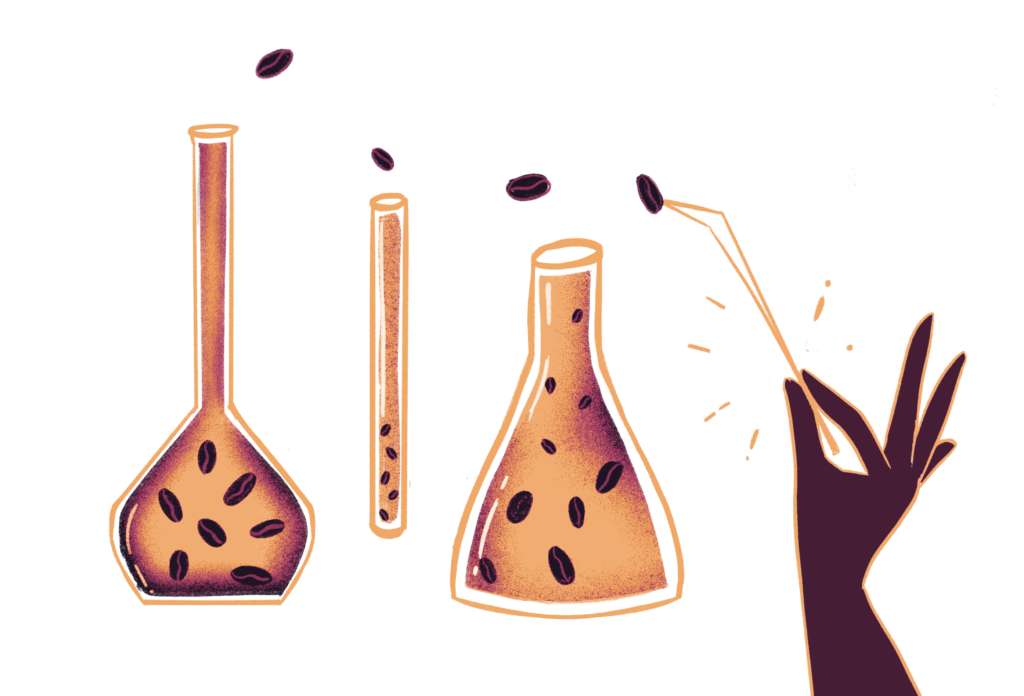
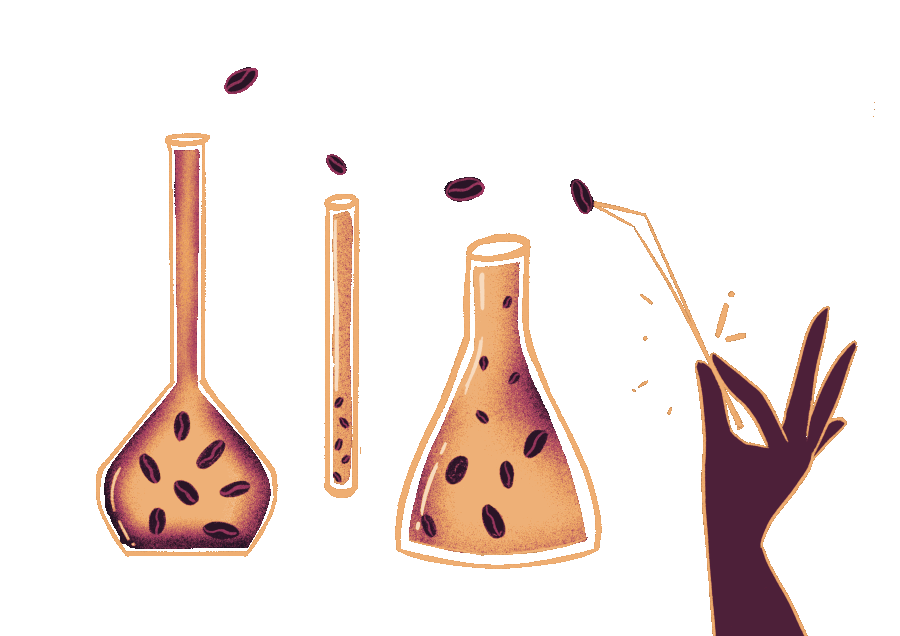
Using a single origin, once you select the right coffee, you need to roast only that one coffee in the right way and prepare brewing guidelines. But in a blend, you have to select multiple coffees, roast them 全部 in ways that make them perform well, and work out how to combine them so they taste great as a group. Theoretically, it is much harder to curate a great and complete sensory experience in a blend, but with some origin and processing knowledge, and understanding what is involved when choosing the green beans to use can be a great help. In this article we will explore how to approach green beans when creating a blend, and what to consider to piece together a flavourful cup profile.
Let’s get to blending.
When deciding on the flavour profile of your blend you should consider what purpose will it be fulfilling. Depending on your business and your clients, you may choose a profile that will suit one style of consumer, or you may choose varying profiles to cover a range of tastes. Regardless of the decision, you should have an idea behind the experience you are wanting to create for the blend and let that guide your choices from there. It is better to focus on one flavour profile per blend rather than try and touch on every profile. There is always room to create an additional blend to cover those tasting notes.
There are 3 common flavour profiles found in a blend. They are:
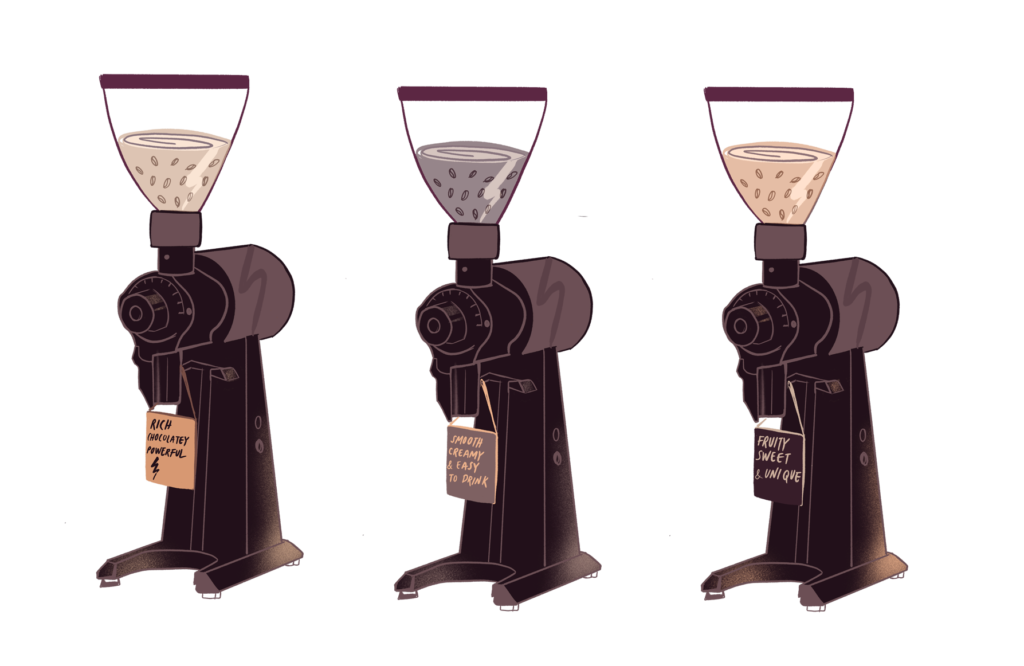
a. Rich, chocolatey and powerful
b. Smooth, creamy and easy to drink
c. Fruity, sweet and unique
Each of these profiles would be approached totally differently. And each of these would suit a different client base. If you’re targeting the office or CBD crowd you’re probably going for a strong and rich coffee style, a quick hit on the way to work. If you’re targeting a suburban café crowd you might want something that’s easy to drink, so customers have more than one while they dine in. And if you’re trying to build a reputation for your roastery for unique and interesting flavours then you might be aiming for something that tastes fruity and exotic. Or maybe you need to create a full range of blends to cover all of these demographics. We’ll explore these three profiles in this article and how to best approach building them.
This is an important question to consider for your roastery. Of course, you can offer both a consistent blend and a changing seasonal blend but knowing which purpose it will satisfy will be an important factor for building the profile.
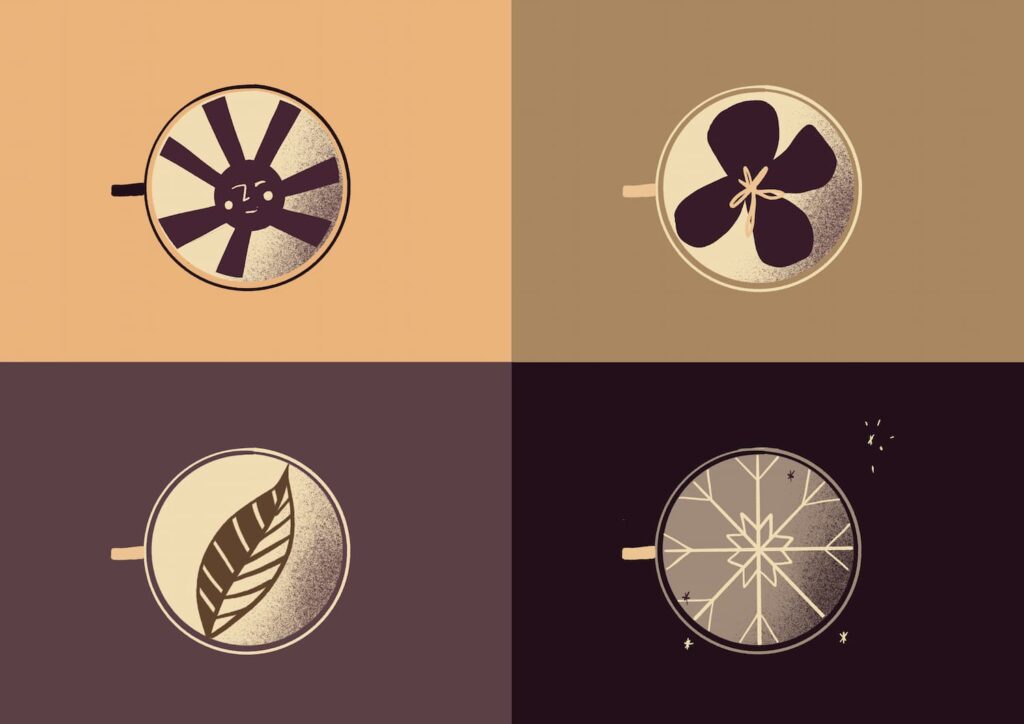
A good aim is to have at least one blend in your range that has a consistent flavour profile. Most consumers don’t want to be surprised when they order a coffee, they want to know that it tastes great and will be consistently good every day. Having a coffee that is rich and chocolatey one day then soft and creamy the next will disappoint them, regardless of how lovely it might taste. Consistency, for a lot of customers and hence cafés, is key. For cafes wanting to offer variety in profiles and coffees, they can do just that by operating multiple grinders and serving different options. But best not have the variety come from the one blend.
Seasonal blends are fun because as a roaster you can craft something that evolves as different origins come into harvest or as new options come available to. you. If you design a blend that changes, you have an opportunity to educate your café clients and really promote the excitement of coffee being an evolving product, with a wide range of origins and flavours to work with. That way they are also able to excite their customers in the café (not surprise them) and make them part of the journey.
Another important question to answer when composing a blend is what final purpose it will serve. Blends designed to be served black need to have their own balance of sweetness, acidity, flavour, and body because only water will be added when it is served to the customer.

Blends designed to be served with milk need to consider how the milk impacts the final cup. Milk adds creaminess, fat, and sweetness, all of which can overpower the flavour of coffee if not carefully considered. A coffee blend that is medium to full bodied with a great depth of flavour is recommended to not only shine through, but also compliment the intensity of the milk. Each of the common profiles can all work as a milk-based coffee if the flavours you want to showcase are strong enough in the coffee beans.
Blends designed to be served as both a black and a milk-based espresso need to cover all bases in balance. An espresso that is high in acid and light in body may taste sour and thin when combined with milk. A subtle and soft espresso may not provide enough depth to give a suitable milk beverage. It will only taste like milk. For a versatile blend, looking for medium to full body and a depth of flavour that can balance within itself is the best option.Blend for black or milk-based espresso
Every day, coffee is proving that one size does not fit all. Every origin, every variety, every process is all susceptible to many factors and because of this we can experience some extraordinary cups from anywhere in the world. This also means that general blanket terms and definitions should be taken with a grain of salt. What we can discuss is some general guides and trends to bulk coffees that are commonly used for blends, and how these origins and common processes can impact the results and set up the common flavour profiles.
Things to note:
1. Information below is just regarding bulk coffee lots. When creating microlots processing will create a vast array of flavours.
2. Different varieties, from the same origins and using the same processes, can behave very differently. We will not be considering varieties and their role in building a blend in this article (but stay tuned for when we do discuss them in more depth).
Processing and its impact on blend profiles
The first thing to consider is what washed and natural processing usually bring to a blend.
Washed processing
Washed processing, when done for bulk lots, will usually accentuate qualities like clarity, acidity and herbal/floral flavours. The type of sweet and fruity notes brought out by washed processing are often notes like caramel, brown sugar and milk chocolate with citrus, apple and stone fruit.
If you think about flavour in colour, like we usually do at Project Origin, you might see washed coffees on a spectrum that goes from white through to green, yellow, orange and a bit of browns or red.
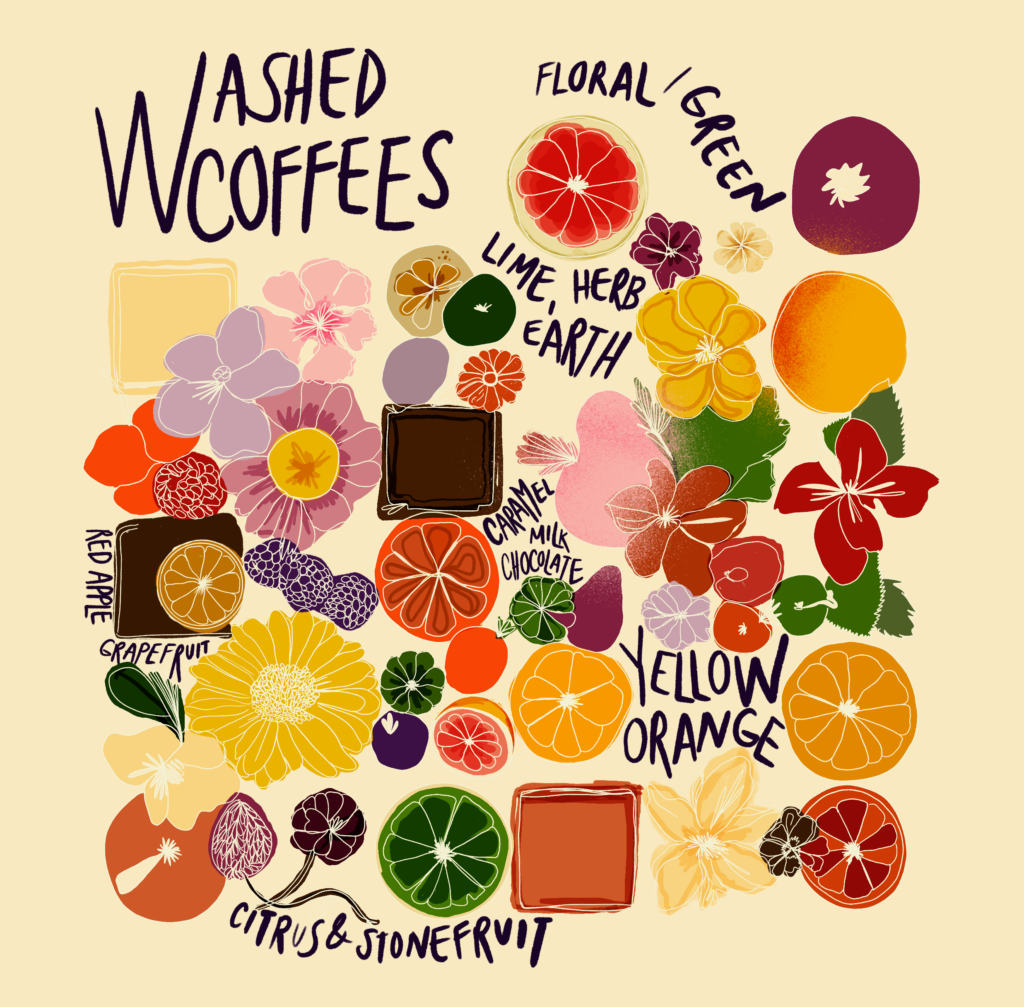
Natural processing
Natural processing, will usually accentuate qualities like body, sweetness and deeper or bolder flavours. The type of sweet notes you might expect would be milk chocolate, dark chocolate and toffee with fruity notes being stone fruit and red, purple, or other dark-skinned fruit such as berries and grapes.
Thinking in colour, we see natural coffees on a spectrum that goes from orange through to red, purple, brown all the way to dark brown.
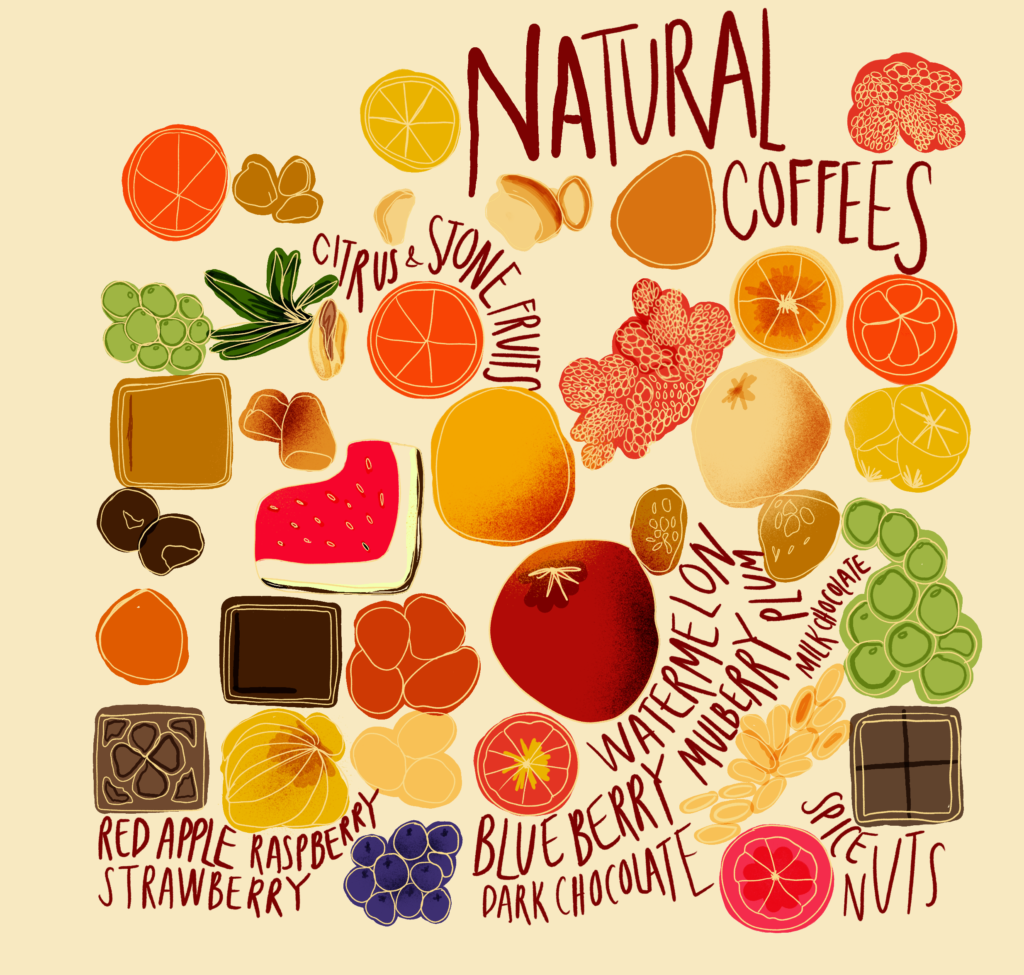
Next, we’ll look at the typical profiles per origin, noting that some origins are well known for more than one type of cup profile. As a general guide, this is how we would summarise origins and their common profiles for blending coffees.
Origins and typical cup profiles for bulk coffees
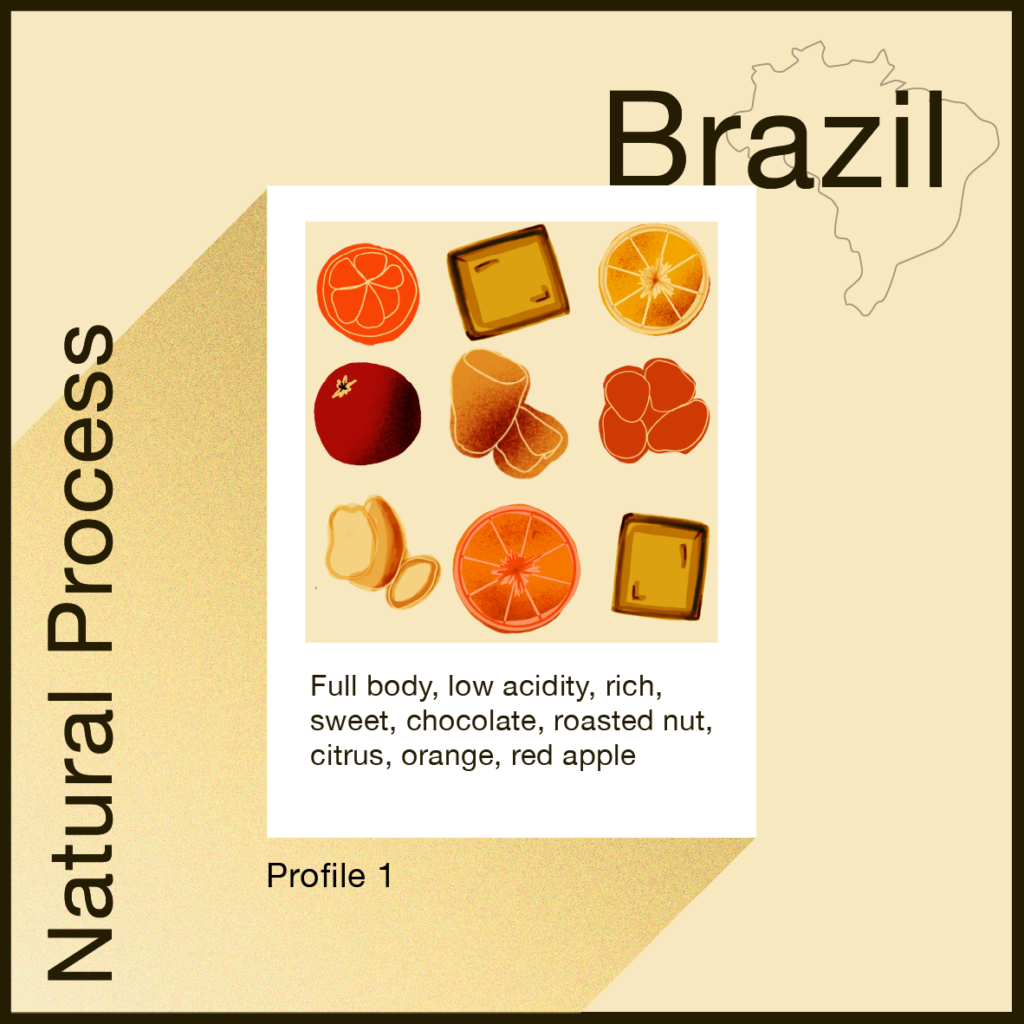
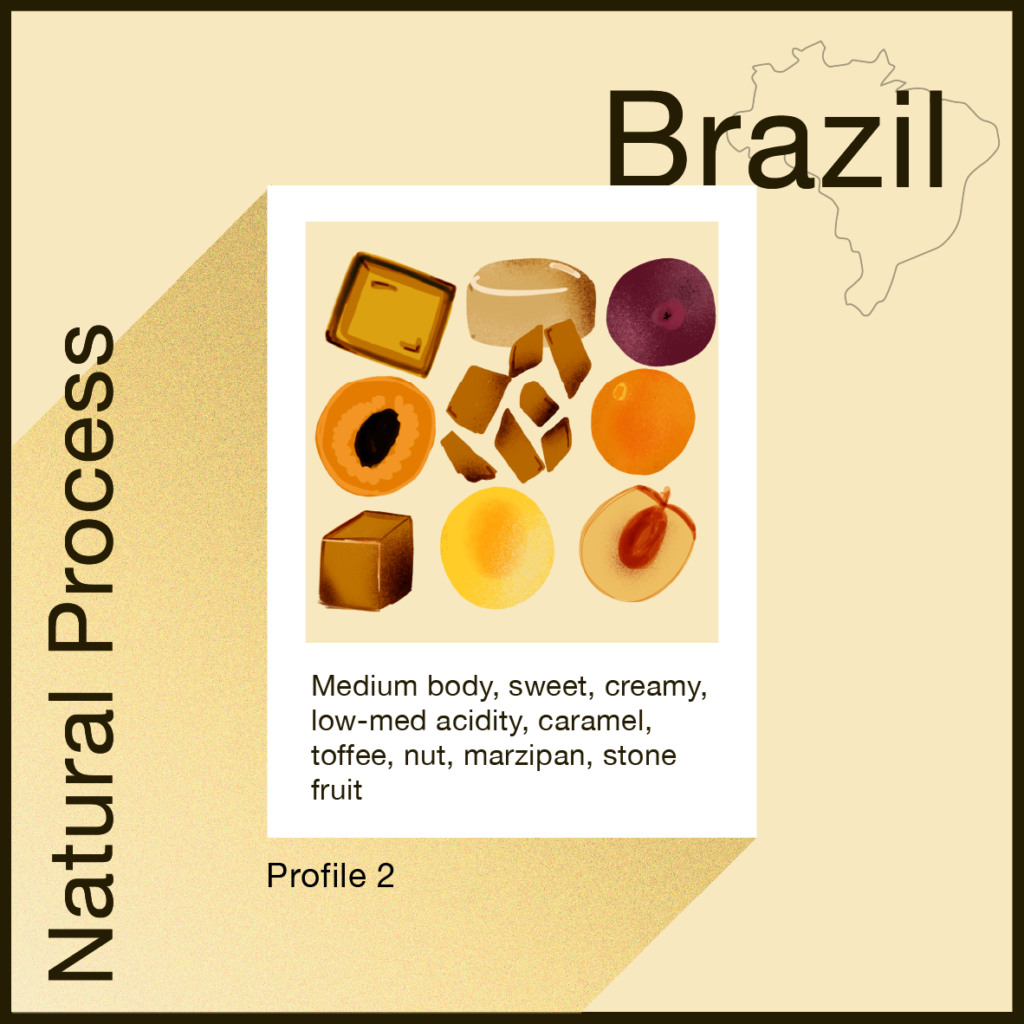
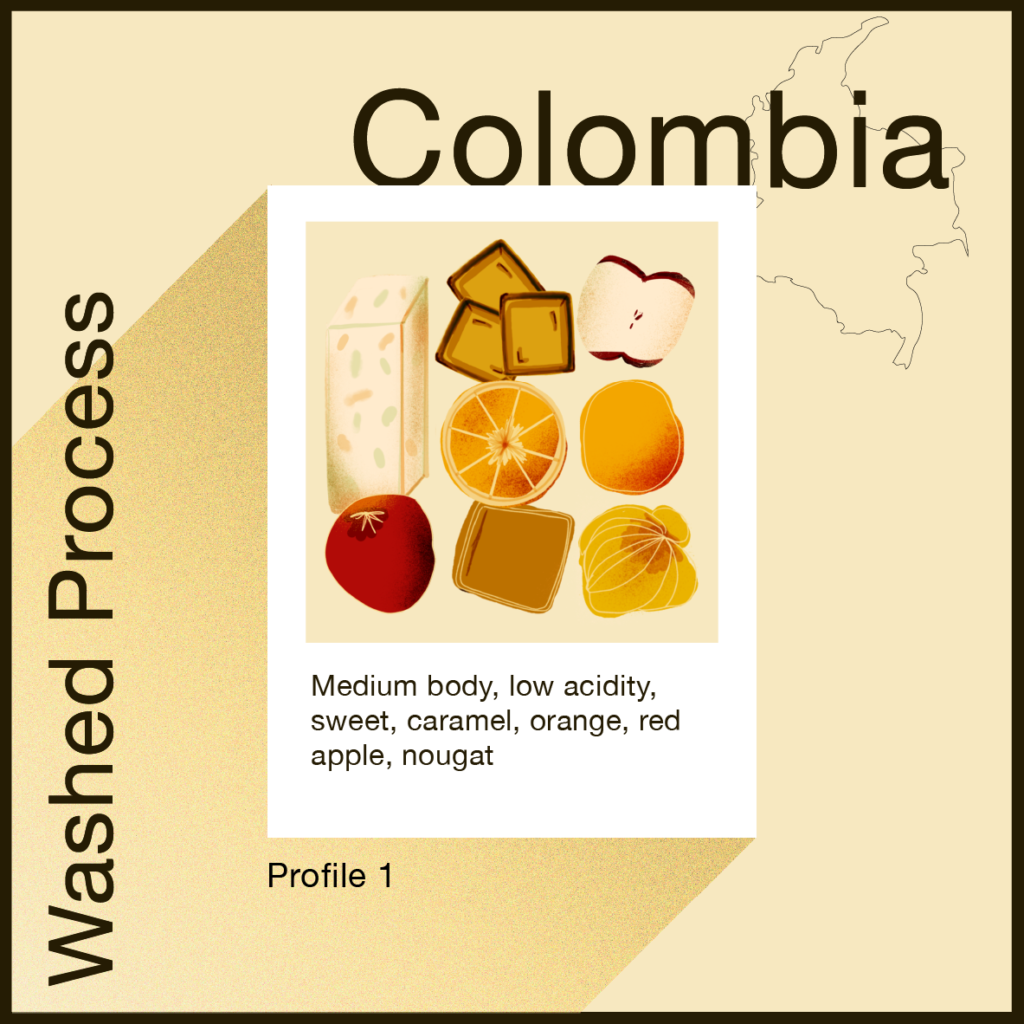

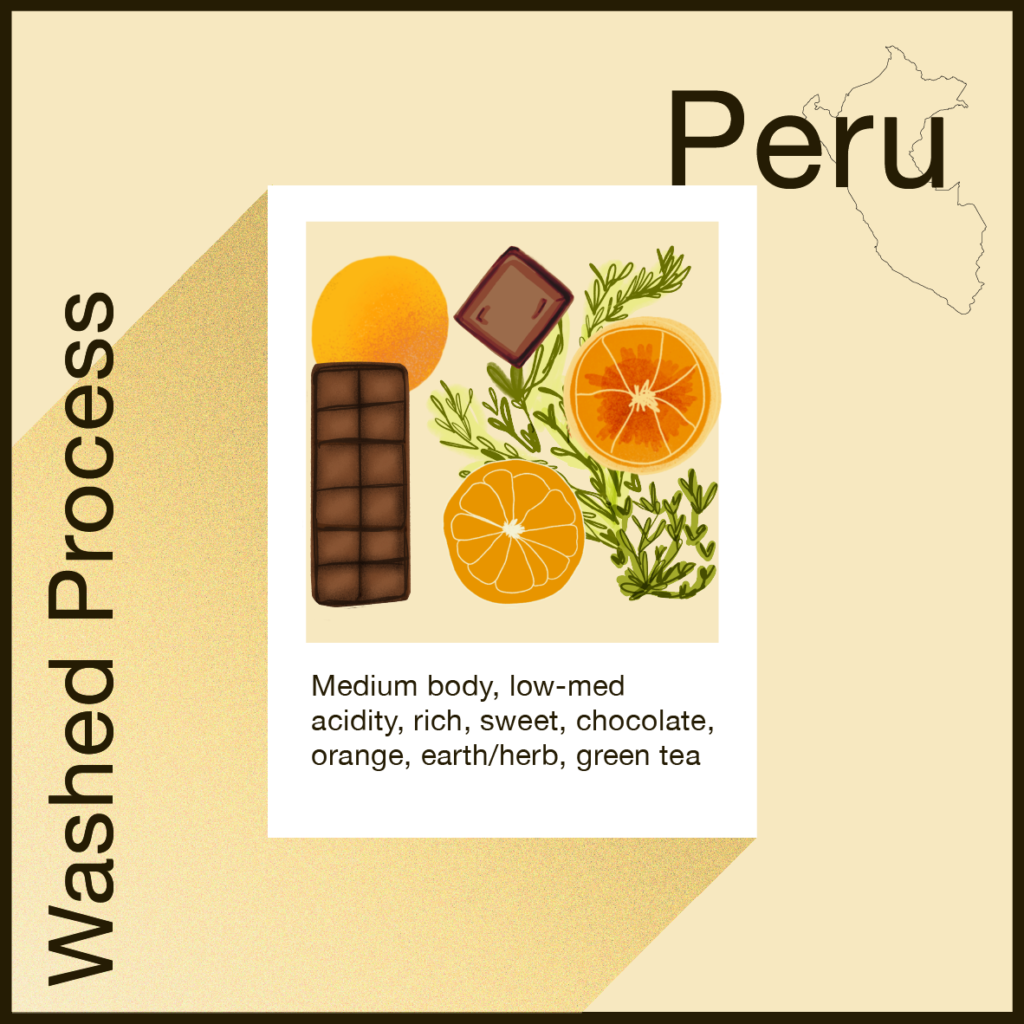
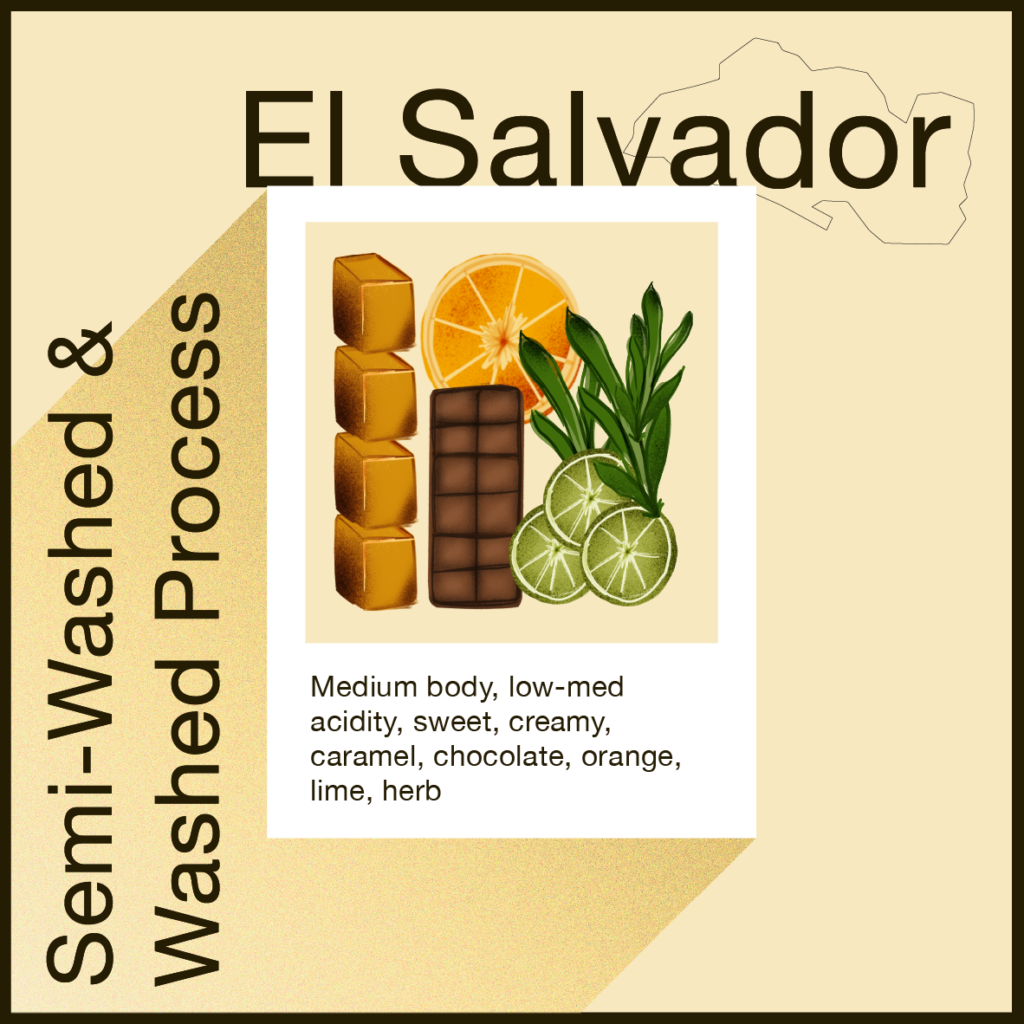
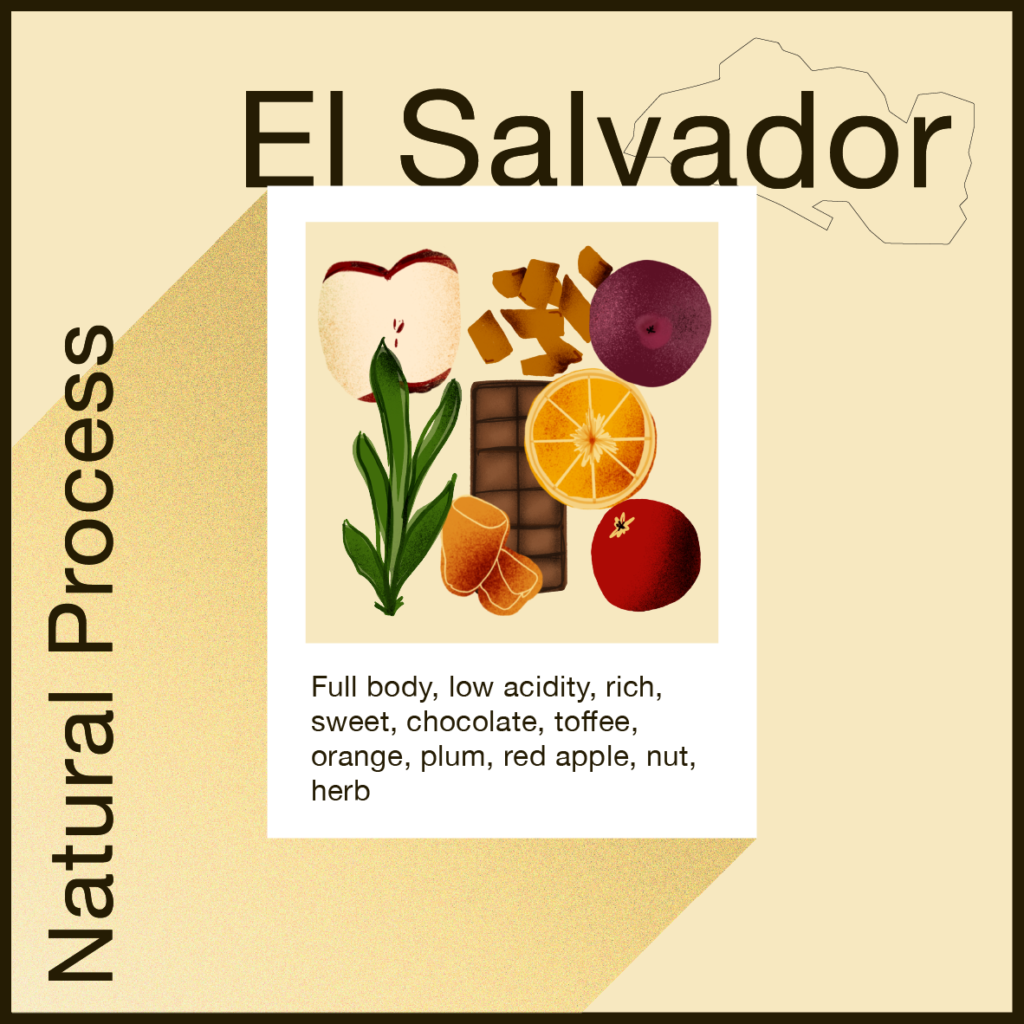
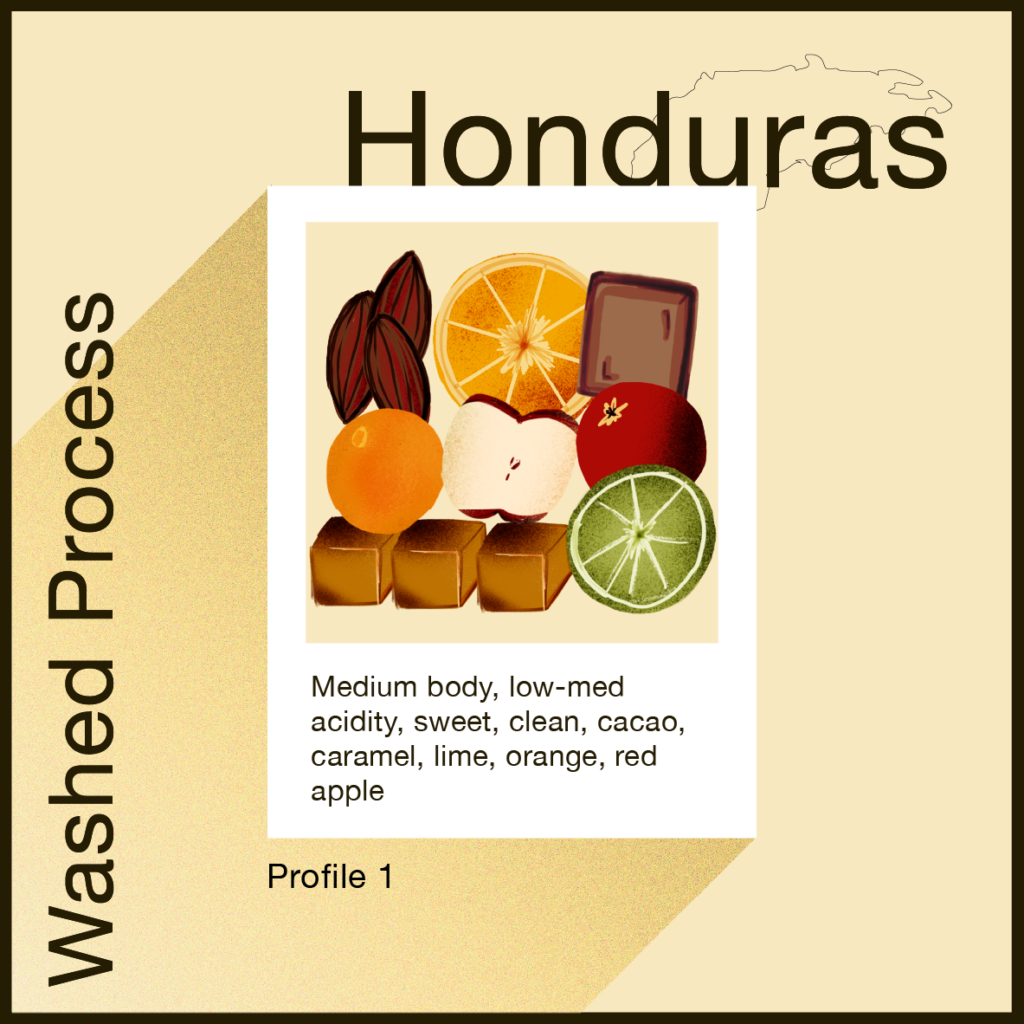
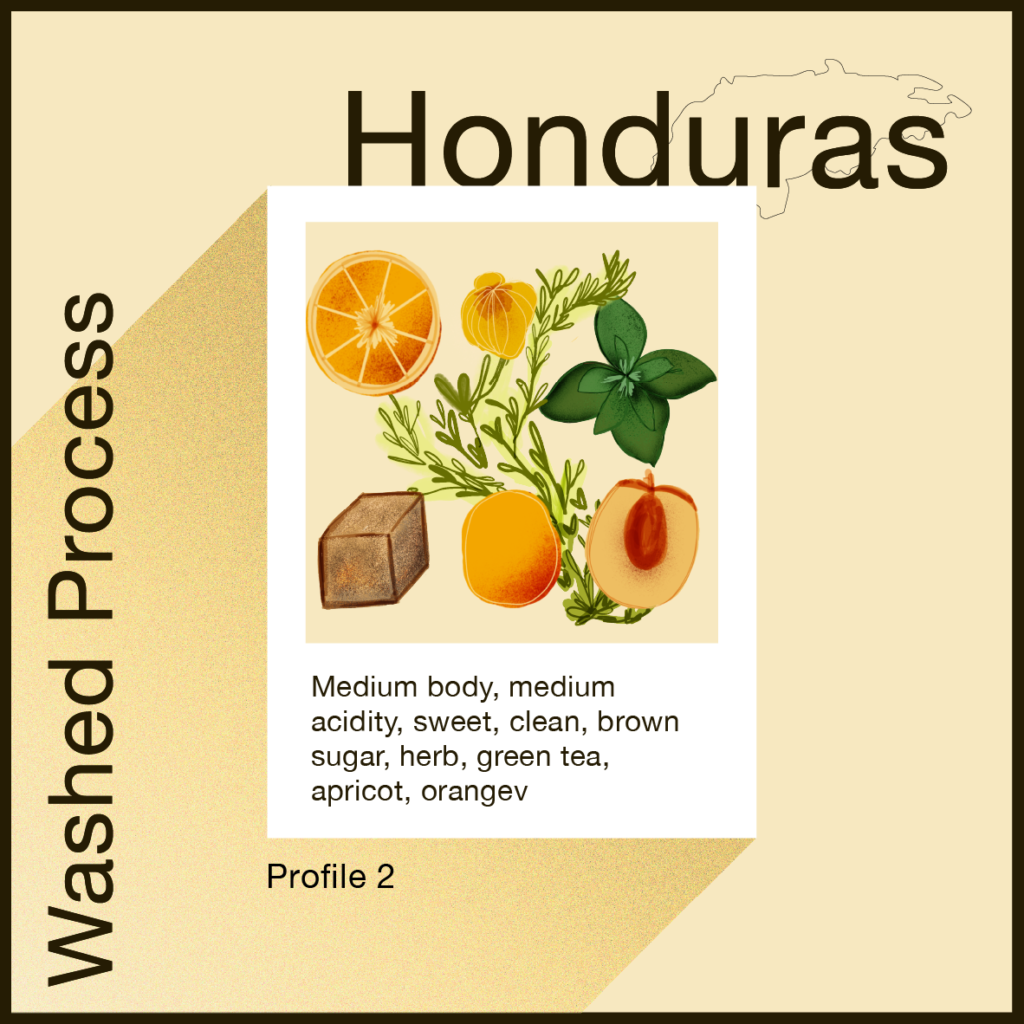
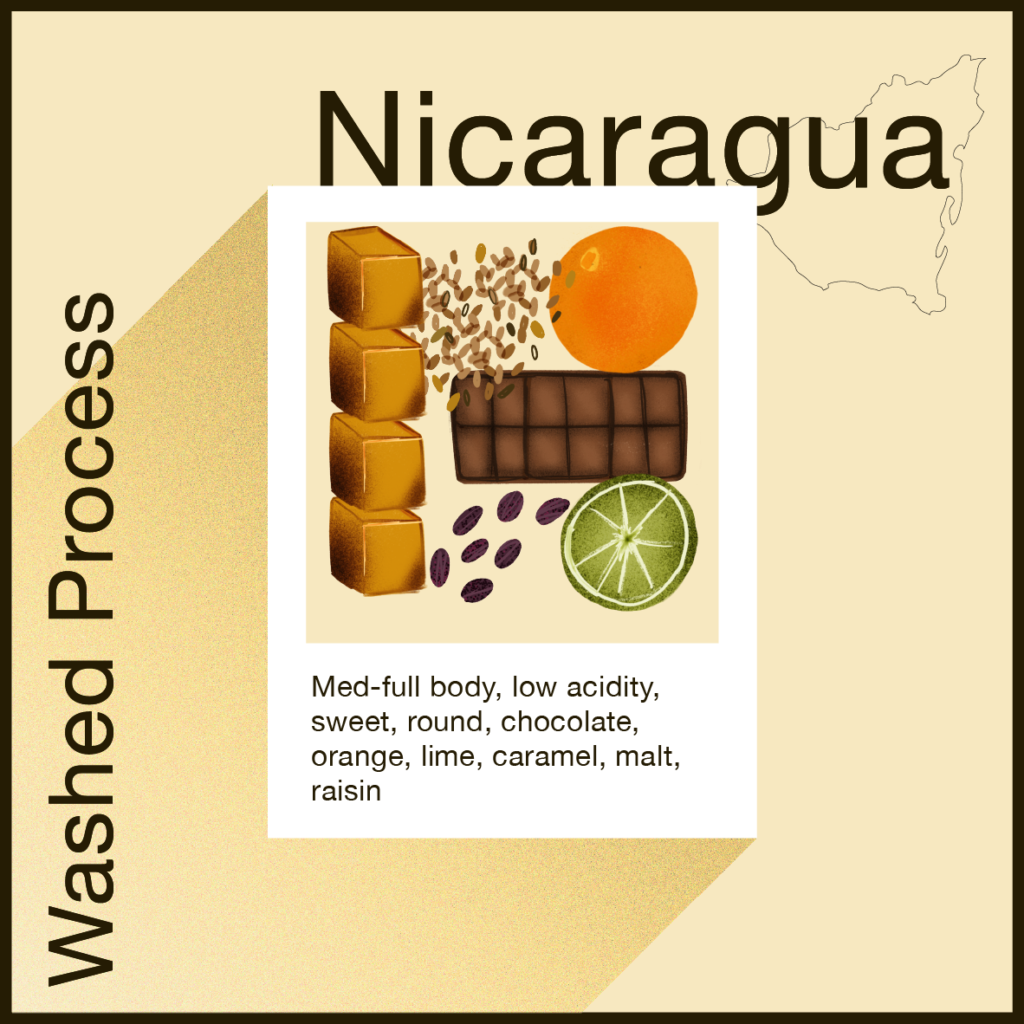
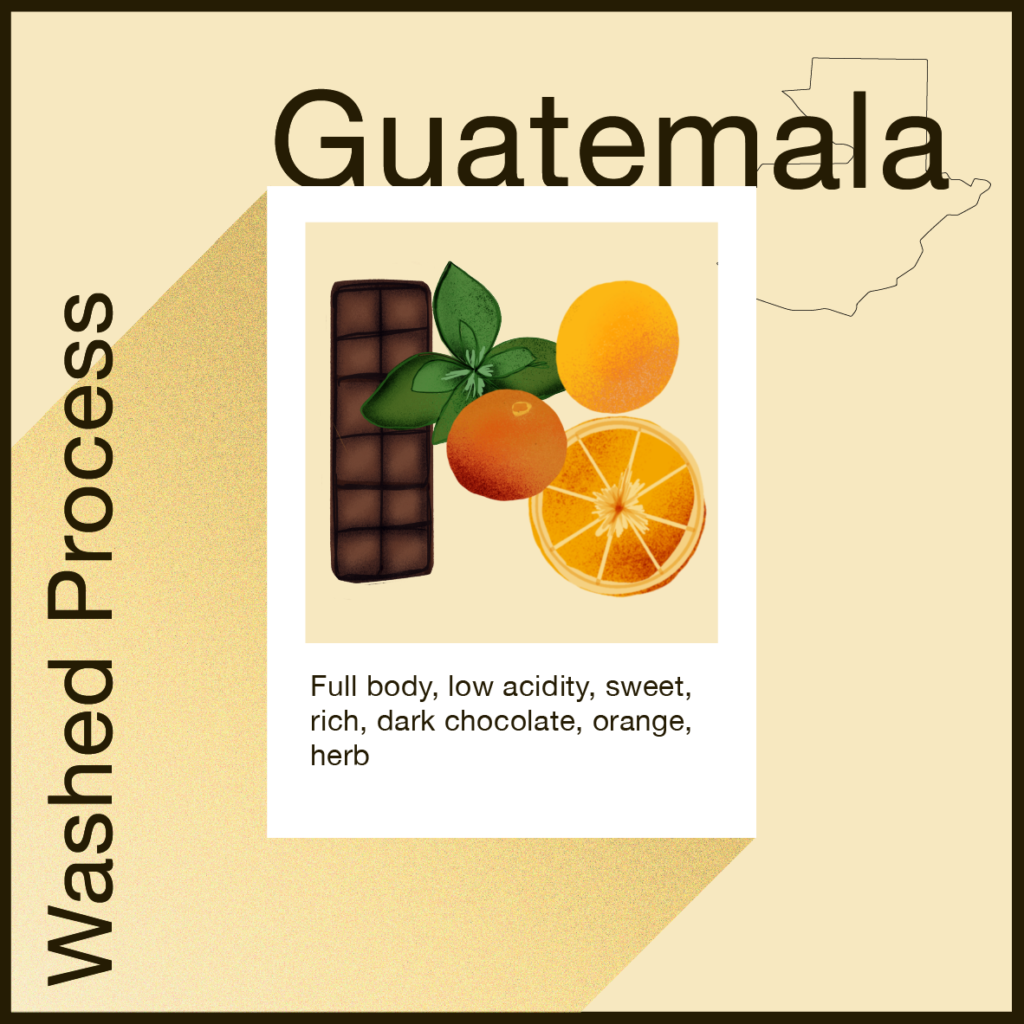
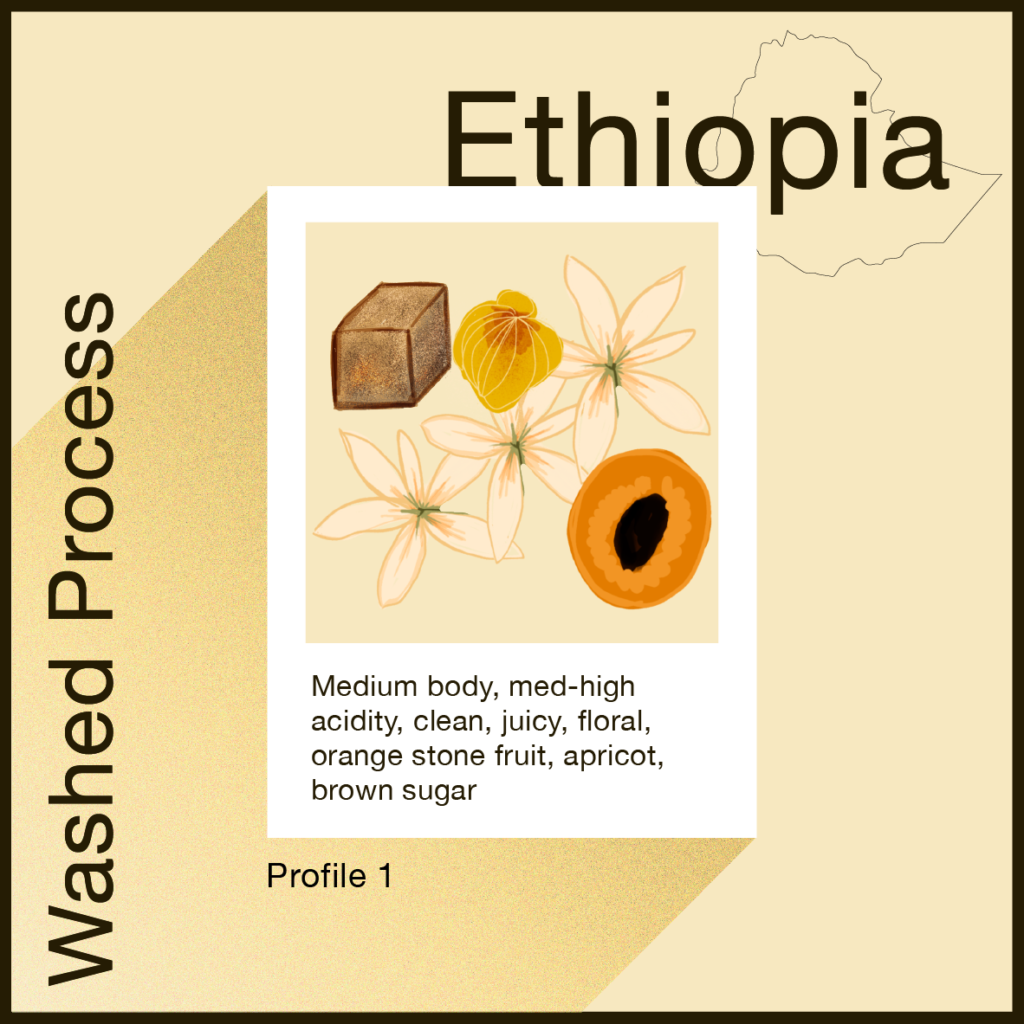
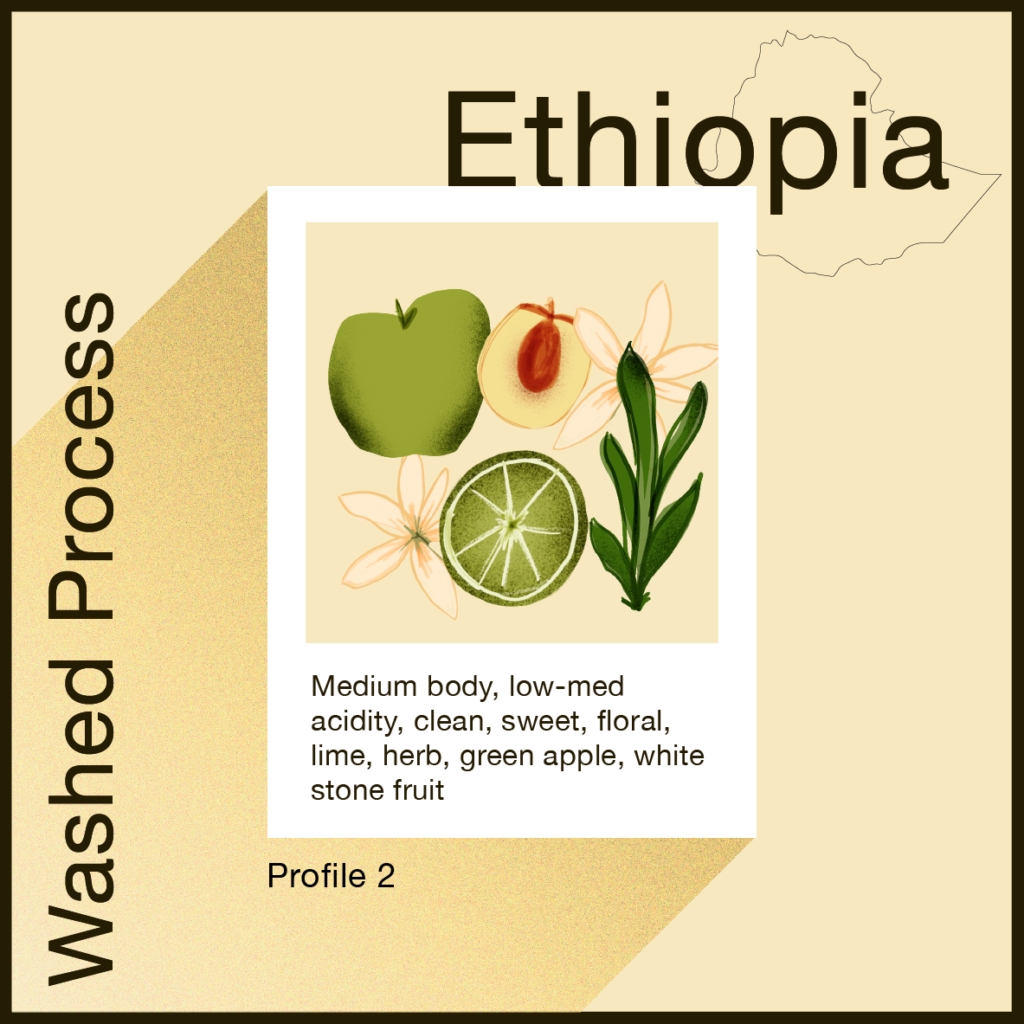
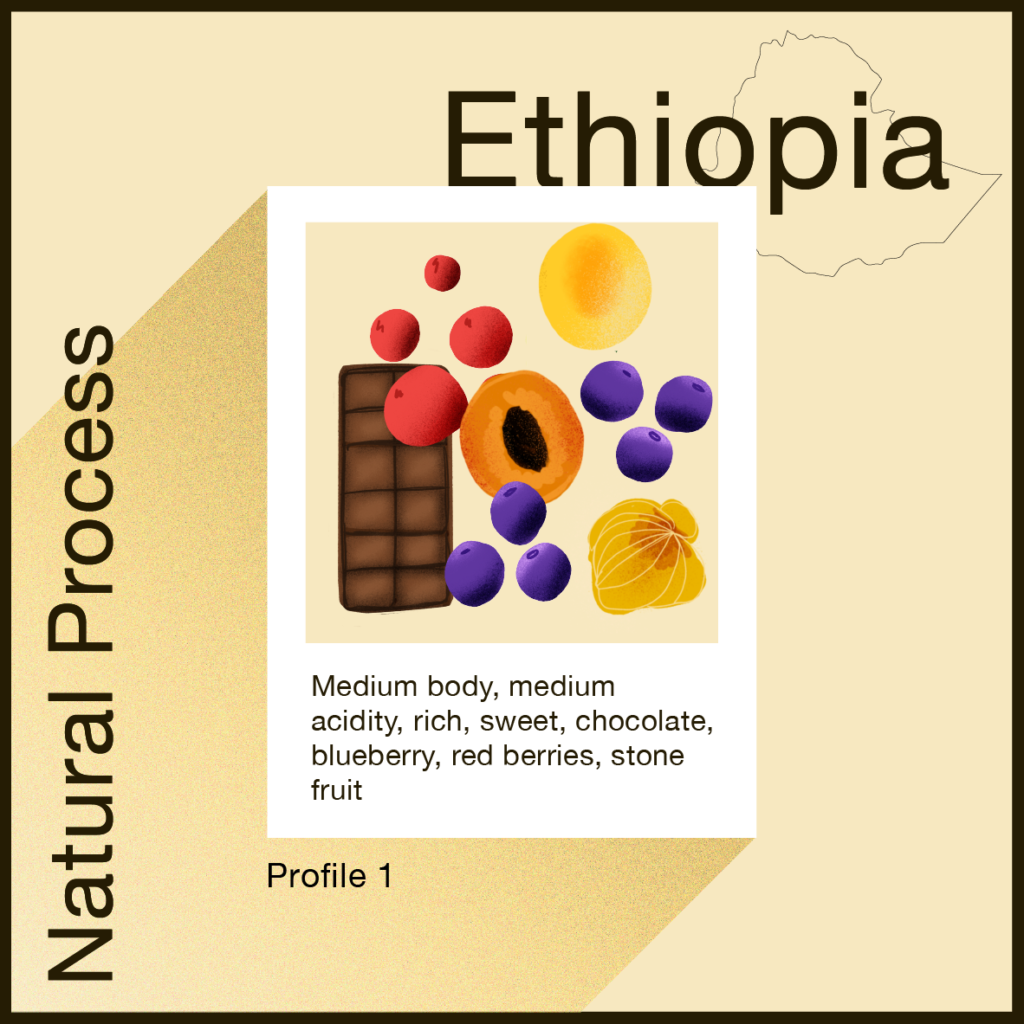
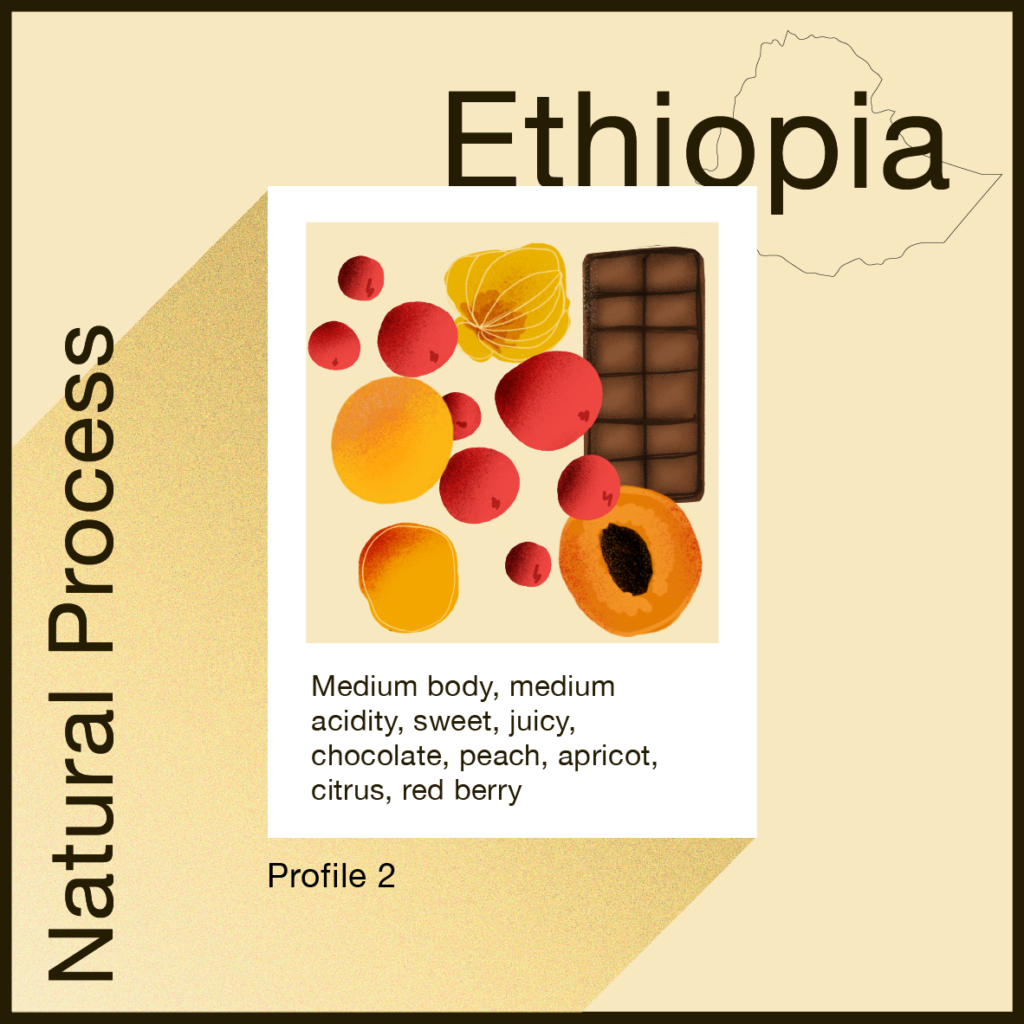
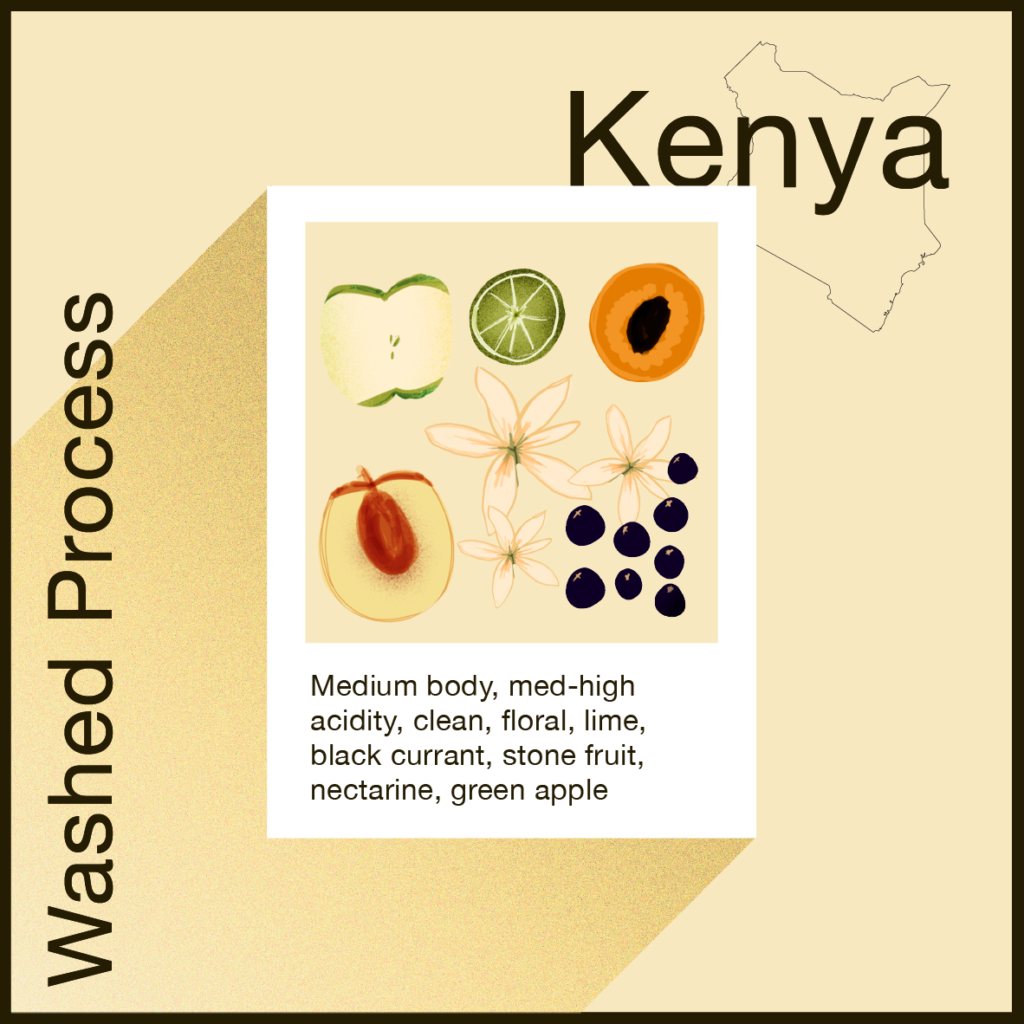
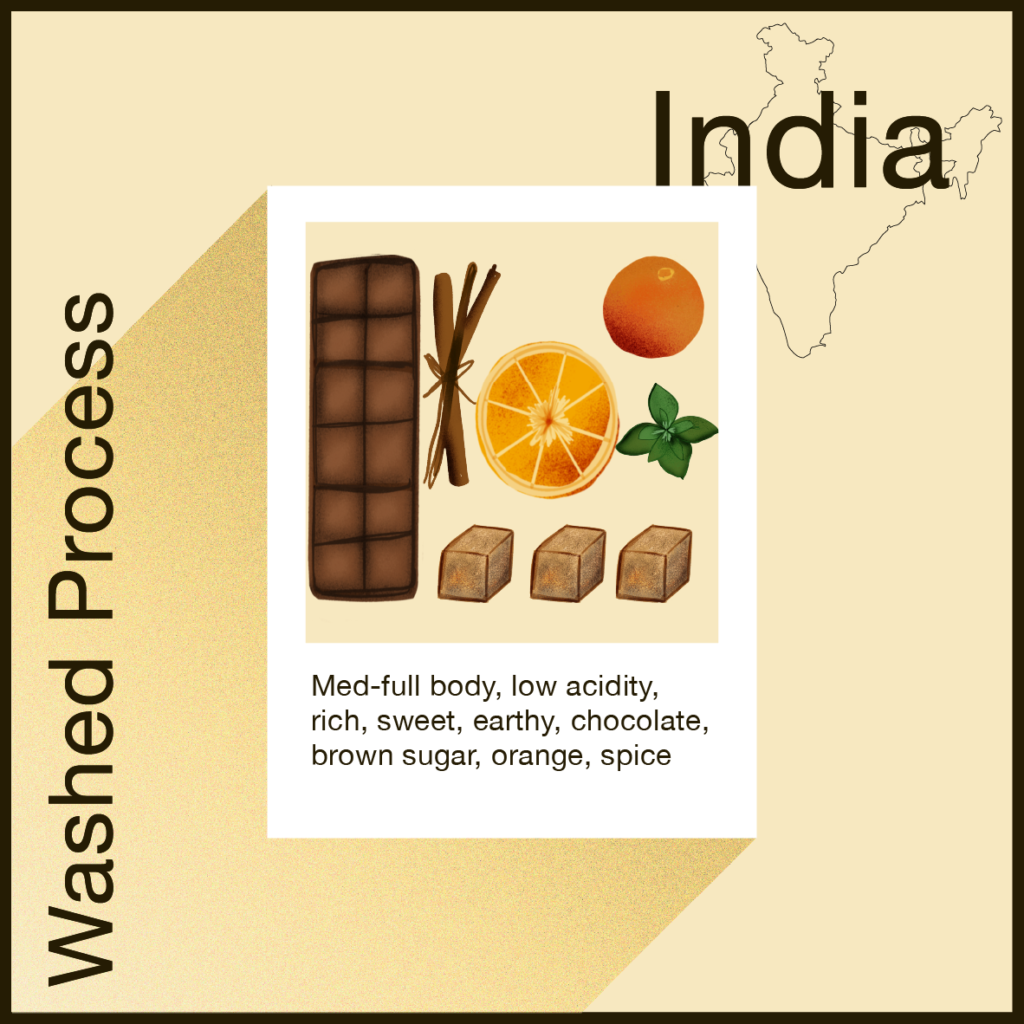
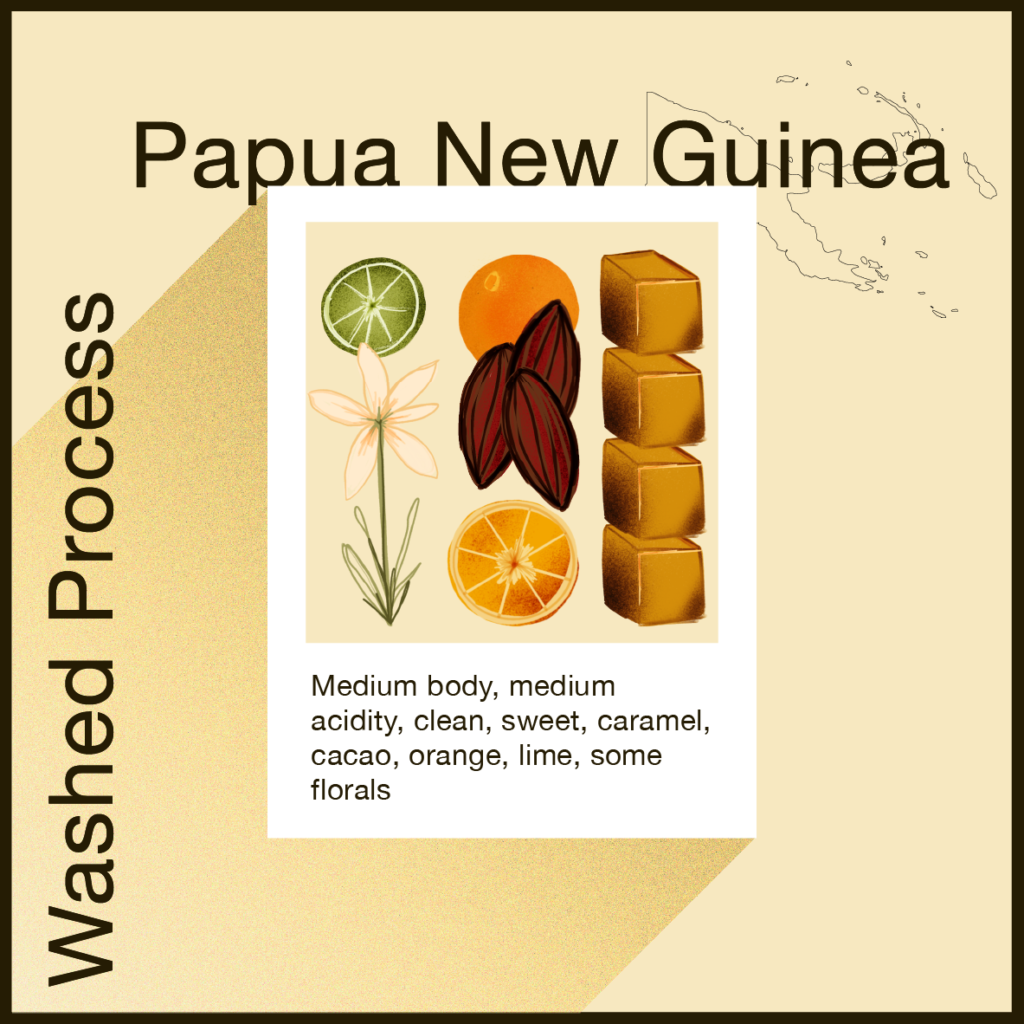

So, now that we’ve covered the characteristics of washed and natural coffees, and the usual profiles from different origins, how do we piece them together?
Remember our 3 common profiles?

1. Rich, chocolatey and powerful
2. Smooth, creamy and easy to drink
3. Fruity, sweet and unique
Of course, the way you choose to roast will have a big impact; however, roasting can’t create flavour that doesn’t exist in the green bean itself, it can only enhance or mute flavours that are already there. We aren’t considering roastiness a flavour here.
We’ll discuss blends as having two key players:
The base coffees and the support coffees.


The base coffees have the biggest role and should be chosen based on the main flavours the blend should have. They should be reliable and consistent.
The support coffees can be more flexible and can create more nuance or diversity in the blend. Their qualities help achieve the final expression.

This blend needs strength and body. The base is best suited to be a natural coffee with chocolate flavour and medium to full body. This can be done with one coffee or two different naturals mixed together. It should have anywhere from 40-80% natural coffee depending on your desired level of intensity. Coffees that are most consistently going to hit this target would be Brazil Naturals and El Salvador Naturals.
Choosing the support coffees will offer you more options. Many support coffees can easily substitute for one another without significantly changing the final product, or not in a way that changes the end customer’s experience.
If you were really going for high intensity, high body and strength, then mixing your natural(s) with a washed coffee from Guatemala, Nicaragua, India, Timor-Leste or PNG would deliver a pretty good result.
If you wanted the strength and body to have a bit more roundness, a bit more acidity and dimension, then using a washed coffee from Colombia or Honduras might suit you more.
Taking that information to build the blend you can see that there are many potential pathways that provide options within this one profile. A complete blend might look like these and deliver the intended overall blend profile.
This blend is all about being approachable and leaving the customer wanting several cups. The base can be natural or washed, but should be medium body and very sweet. Most likely it will be mostly washed coffee or entirely washed coffee. Like Blend 1, the base can be created using one or two coffees and should be anywhere from 40-80% with the support coffee(s) bringing in the finishing touches. Coffees that are most consistently going to hit this smooth, sweet target would be washed lots from El Salvador, Nicaragua, Guatemala, Colombia, and Timor-Leste. They could make up the base by themselves or combine with a Brazil or El Salvador Natural to strengthen the base.
There are many washed support coffees that could work for this profile to satisfy your desired level of acidity and flavours. For a simple caramel, nut, malt direction, mixing your base with a combination of washed coffees from Peru, Honduras, Colombia, Timor-Leste or PNG would deliver a pretty good result.
If you wanted some fruit acidity coming through then using a washed coffee from Ethiopia, Kenya or Colombia might do the trick.
Some examples of a complete blend profile would be:
This blend is all about uniqueness and fruit flavours. It’s usually a showcase blend that is trying to show customers just how diverse coffee can taste. The base can be natural or washed, but should be medium to full body, have strong fruit flavours and good sweetness. Most likely it will have a large portion of natural coffee because they are most likely to deliver the fruit intensity in milk. The support coffees here are very important and should bring acidity that allows the fruit to come through the milk.
Coffees that are known for fruit intensity would be Ethiopian Naturals and El Salvador Naturals.
The support coffees might involve some trial and error with this blend, but we’d suggest starting with washed lots from Kenya, Ethiopia, Colombia and possibly Honduras and PNG. That’s not to say other origins couldn’t work well, it would depend on the exact coffee lot.

The number of components is a subjective decision for you to make. Some roasters favour a higher number of components for complexity, but also to minimise relying on any one coffee if it needs to be replaced with something else, perhaps due to cost reasons or supply availability. It is common to see 3-6 components in a blend. Other roasters keep minimal blend components for easier inventory and production management, picking only what is needed to get the result and relying on those coffees heavily. A blend can be created with just two coffees if they bring all the attributes you need.
Once you have found the components that bring the qualities you want into the blend, it’s trial and error using different percentages of each that will achieve the result. Sometimes changing a component by 5% up or down can make a surprising difference. That’s where your craft, your palate and your ultimate goal should take the lead in the decision.
How to make a blend taste fresh all year round?
One great impact on the flavour and liveliness of a blend comes down to the age of the green beans being roasted. It is important to consider how to keep a blend tasting fresh throughout the year based on the availability of coffee beans from the origins you have chosen. Anyone who buys green beans should understand the harvest calendar and know that every origin has a unique harvest cycle with some regions of the world having multiple countries harvesting at very similar times.
As a roaster you want to plan your green coffee bean needs so you never run out of stock, but also so that you’re not using the same coffee for too long that its cup qualities and flavours begin to fade. As one coffee ages you should be preparing to switch it for another coffee that is fresher. This could be the same farm and origin but the following years crop, or it could be another coffee serving a similar purpose in the blend but from another country with a different harvest time.
Things to know

A. All coffee will age eventually. You should aim to use green beans somewhere between 6 and 18 months from when it was harvested.

B. Harvesting and drying conditions, including the altitude the coffee was grown at, the method and care of the drying process, and the packaging of the green coffee beans, will all affect how well a coffee ages

C. The way you store the coffee once imported (or received into your roastery) is very important to ageing.
You can’t control all these points, but you can make smart choices knowing what things will affect the ageing process of coffee.
Coffee storage in your roastery (or with your green bean importer) is something you can and should control. For longevity, coffee should be stored at a stable, cool temperature with low, controlled humidity. 18-22ºCelsius is ideal. If your local climate makes this difficult, stability of temperature is the next most important thing. Even storing at a consistent 24ºCelsius is better than coffee stored at fluctuating temperatures, like 20ºC some days and 28ºC on other days. Humidity is ideally between 40-60%. On the lower side of this range is best, but again, if this is not manageable, stability is most important. Having big swings in humidity where your green beans are stored is not good for their ageing.
Harvesting and drying conditions is something you cannot control but you can influence in the decisions you make. For example, if you always buy the cheapest coffee option from a particular country regardless of the producer, the altitude or drying method, then you might find some lots taste good and age well, but other lots age quickly. This is mainly because there’s no way to be sure how well a coffee will age. But if you choose to work with the same producer or coffee collection station on an ongoing basis, you will be familiar with how they process coffee and what results you can expect when it comes to ageing. That will give you some consistency when that coffee arrives to your roastery each harvest and there is a lot of value in having that knowledge and certainty. Not to mention the value of long-term relationships from a producer’s perspective.
Once you have storage under control, and you’re committed to understanding the harvesting and drying conditions of the coffees you are buying, then it’s about making sure your blend is made of coffees that ARE NOT all harvested at the same time. If you look back over the blends we designed to make the 3 common profiles, you’ll see that every blend has at least 20% coming from an origin with a different harvesting time to the other components.
Why is this so important?
Let’s consider example A from our “Rich, chocolatey and powerful” blend.
Brazil harvests around June/July each year. El Salvador and Nicaragua around November/December. Assume you’re buying Brazilian coffee to last 12 months from one harvest to the next and doing the same for El Salvador and Nicaragua.
Around November you might find the El Salvador or Nicaragua coffees starting to lose a little intensity of flavour, or sweetness or acidity. This loss of intensity might show through your blend, but your fresh Brazil coffee will have enough intensity of its own to carry the blend until the new harvest. If this blend used coffees that all harvested at the same time, your profile will very noticeably ride the wave of freshness in the final cup. By alternating harvest periods in the coffee you use, you can draw out the overall fluctuations in flavour, acidity, and intensity. This is also a common reason why some roasters use a higher number of components in their blends; to reduce the impact of aging coffee flavours across a twelve-month period.
Costing out a blend is a step that shouldn’t be forgotten. It is important to find a combination of coffees that pair well together to achieve the intended purpose (is it served black, milky or both?) for the intended audience. It is also important to find coffees that are accessible and will carry you through a full year in between harvests. It is equally important to choose these coffees based on affordability for bulk purchasing.
Typically, roasters will buy coffees for blends in bulk volumes because your greatest selling products are your blends. You don’t want to run out of it. Because blends are sold the most and in large quantities, it is smart to ensure that they provide a reasonable profit margin to keep the roastery operating. When considering coffees to use for blends, you need to think about how much each component will cost you, and how much the combination of the coffees will cost altogether. It’s all well and good to have a budget of, say, $18/kg for the final roasted coffee, but if 50% of your blend is costing you $13/kg, then you are not leaving a lot of room for the other 50% of coffees. This may seem like a dull or obvious point, but it is an important one to consider.
We recommend sourcing your base coffees with the full harvest year in mind. Buy them in bulk as they are the most important part of the blend to achieve the flavour profile you want. When selecting them, make sure they are the most cost competitive components of the blend.
So if your budget is $18/kg, try and aim to have the base component(s) costing $9/kg or less. If your base component can be bought at a competitive price, it gives you room for the support components to be slightly more expensive and bring a bit more character to the final result.
When designing a blend, there are many things to think about. It is most helpful to decide what flavour profile and audience market you are trying to reach when choosing which coffees to put together. After you make that decision, consider which origins and processes will best achieve these targets, and ensure stock availability throughout a full twelve-month period.
If you would like some help in combining coffees, you can always reach out to your green bean supplier. They will have answers to any questions about stock availability, longevity, aging, harvest information and cup profile details. They will be on your side to create that blend that makes consumers go wow.
随时了解我们的 Project Origin 项目和最新的精品咖啡生豆进口
我们承认我们工作的土地的传统所有者,Ngunnawal 人。我们向过去的长辈、现在和新兴的致以敬意。
